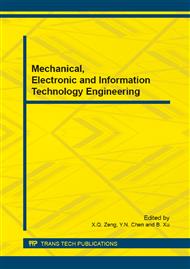p.800
p.808
p.812
p.816
p.820
p.824
p.828
p.836
p.840
Deflection Sensors Fault Time Locating Based on Kalman Filtering and Data Fusion
Abstract:
Traditional research on sensor fault are usually confined to fault space locating, however, it’s very necessary to determine the time that the fault occurrence for subsequent data processing and to guarantee the normal operation of the monitoring system. Therefore, this paper proposes a method of sensors fault time locating. First of all, use Kalman filter to process the sensor data, then define the support level of sliding window correlation to sample correlation, combining with multi sensors data fusion, so as to identify the accurate time point of fault. Combine the deflection sensors data from Caiyuanba bridge, simulating four common faults. The results show that the error of located time is less than the width of the sliding window.
Info:
Periodical:
Pages:
820-823
Citation:
Online since:
March 2015
Authors:
Keywords:
Price:
Сopyright:
© 2015 Trans Tech Publications Ltd. All Rights Reserved
Share:
Citation:


